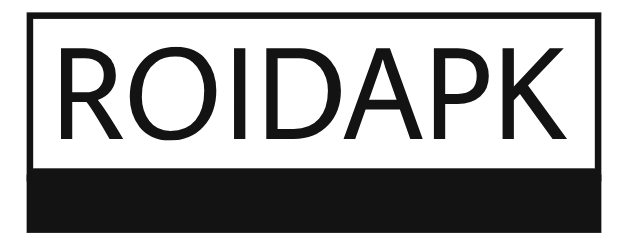Introduction to Parchment Paper
Parchment paper, also known as baking paper, is a kitchen essential for both professional chefs and home cooks. It is a grease- and moisture-resistant paper that has been treated with silicone to create a non-stick surface. This makes it ideal for baking, roasting, steaming, and food wrapping. Whether you are baking cookies or preparing delicate fish, parchment paper can make cooking easier and cleanup much faster. In this article, we will explore everything about parchment paper: what it is, its benefits, how to use it, and why it has become a must-have kitchen item worldwide.
What is Parchment Paper?
Parchment paper is a specially treated paper designed to withstand heat while providing a non-stick surface. It is typically made from cellulose fibers derived from wood pulp and is coated with a thin layer of food-safe silicone. This coating prevents food from sticking and allows for easy removal after cooking.
There are two main types of parchment paper:
- Bleached Parchment Paper – White in color due to chlorine or oxygen bleaching.
- Unbleached Parchment Paper – Brown in color and free from chlorine, making it an eco-friendly choice.
Key Benefits of Using Parchment Paper
1. Non-Stick Cooking Surface
The silicone coating on parchment paper ensures that food doesn’t stick, making it perfect for baking cookies, cakes, and pastries.
2. Easy Cleanup
Because parchment paper prevents food from sticking to pans, cleaning up after cooking is quick and effortless.
3. Heat Resistance
Most parchment papers can withstand temperatures up to 420–450°F (215–232°C), making them ideal for oven use.
4. Grease and Moisture Resistance
Parchment paper resists oil and moisture, helping to maintain the texture and flavor of baked goods.
5. Versatility
From lining baking sheets to wrapping food for steaming or roasting, parchment paper can be used in multiple cooking methods.
Common Uses of Parchment Paper
1. Baking
Parchment paper is most commonly used to line baking sheets and cake pans. This prevents sticking and helps baked goods cook evenly.
Example: When making cookies, place a sheet of parchment paper on the baking tray. This allows the cookies to slide off easily without breaking.
2. Steaming
It can be used to make “en papillote” dishes, where food like fish and vegetables are wrapped in parchment paper and baked, steaming in their own juices.
3. Rolling Out Dough
Parchment paper can be placed between dough and rolling pin to prevent sticking without adding extra flour.
4. Roasting Vegetables
Lining the roasting tray with parchment paper ensures vegetables cook evenly and prevents burning.
5. Candy Making
Because of its non-stick surface, parchment paper is great for pouring out melted chocolate or caramel to cool.
How to Use Parchment Paper Correctly
- Cut to Fit – Trim the paper to match your baking pan or tray size.
- Grease if Needed – Although it is non-stick, greasing lightly can help when baking very delicate items.
- Avoid Direct Flames – Parchment paper is not suitable for broiling as it can burn.
- Reuse Wisely – You can reuse parchment paper for multiple batches of cookies if it remains clean.
Parchment Paper vs Wax Paper
While both look similar, parchment paper and wax paper are different.
- Parchment Paper – Heat-resistant and safe for oven use.
- Wax Paper – Coated with wax (usually paraffin) and not heat-resistant, suitable for cold uses like wrapping food or rolling dough.
Eco-Friendly and Sustainable Options
For environmentally conscious cooks, unbleached parchment paper is a better choice since it is free from chlorine and can be composted. Many brands now offer biodegradable parchment paper made from sustainably sourced wood pulp.
Safety Tips for Using Parchment Paper
- Check the Temperature Limit – Always check the manufacturer’s heat limit before using it in the oven.
- Avoid Overheating – Parchment can brown and become brittle if exposed to extreme heat for too long.
- Store Properly – Keep parchment paper in a cool, dry place to prevent moisture damage.
Frequently Asked Questions About Parchment Paper
Q1: Can parchment paper go in the oven? Yes, it is oven-safe up to its specified heat limit (usually 420–450°F).
Q2: Can I use parchment paper in an air fryer? Yes, but ensure it is weighted down with food to prevent it from flying around due to the fan.
Q3: Is parchment paper reusable? Yes, for certain uses like baking cookies, it can be reused until it becomes too greasy or burnt.
Q4: Can parchment paper be composted? Unbleached parchment paper can be composted as it is biodegradable.
Conclusion
Parchment paper is a versatile, convenient, and essential tool for every kitchen. From making baking easier to simplifying cleanup, it has countless uses that save time and effort. Whether you choose bleached or unbleached, parchment paper can help you achieve professional cooking results right at home. If you haven’t yet made parchment paper a part of your cooking routine, now is the time to start. It’s an inexpensive way to improve your baking, roasting, and steaming results while making cleanup a breeze.

